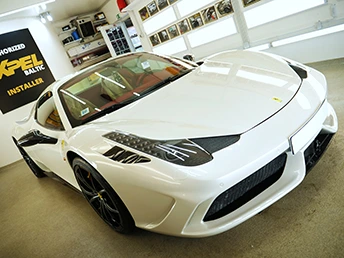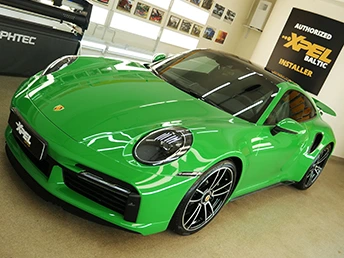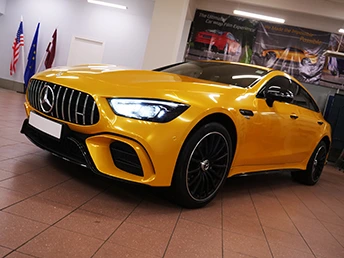Window tinting is a process of applying a special film to a car’s windows with the aim of altering their transparency, darkness level, reflective properties, and providing protection from heat. This process not only enhances the exterior appearance of the vehicle but also brings several other benefits to its owner.
Window tinting is done using tint films that contain special pigments, metallic particles, or nanoceramic particles. These elements filter incoming sunlight, blocking infrared (IR) and ultraviolet (UV) rays, helping to reduce the heat load in the cabin. Additionally, tint films add extra strength to the glass and can reduce glare from sunlight, preventing fading and deterioration of interior components.
As a result, window tinting offers several advantages for the car owner. Firstly, it improves comfort while driving, especially in hot weather (while reducing the workload on the air conditioner, the interior temperature still becomes lower). Secondly, it provides additional privacy, shielding from curious onlookers. Thirdly, it diminishes the brightness of headlights at night, reducing driver discomfort and fatigue.
The time required for the tint film to be applied to your car depends on its design, complexity, and the installation method. Standard tinting usually takes a few hours, but more intricate vehicles may take longer.
Tinting a car with nanoceramic, non-thermal films in Riga
This special film blocks 90% of infrared (IR) rays and 95% of ultraviolet (UV) rays, providing unparalleled protection from UV radiation and solar heat. It significantly reduces the load on the air conditioner, increases glass strength, while maintaining high transparency.
Key advantages of nanoceramic window tinting include even distribution of particles on the glass, ensuring enhanced efficiency and transparency; high effectiveness in protecting against UV rays, infrared radiation, and solar heat; increased transparency compared to some other tinting technologies; resistance to fading over time, with the nanoceramic technology supporting a 10-year warranty; heat-dissipating properties that help reduce the temperature inside the car and decrease the strain on the air conditioner, thereby lowering the risk of illness and reducing fuel/battery consumption; minimal impact on electronics, with nanoceramic window tinting usually generating fewer electromagnetic interferences compared to some metallic tint films, which is particularly important for the functioning of car electronics.
Which window tint should I choose for my car?
When choosing window tinting for a car, it is crucial to consider compliance with the laws of the European Union and Latvia. These requirements include:
- Prohibition of covering the windshield with any films.
- According to CSDD rules, the upper part of the front windshield of a car can be tinted by no more than 5-7 cm, depending on the make and model.
- The light transmittance of the front door windows and the windows near the side-view mirrors must be at least 70%.
- There are no restrictions on tinting the rear windows.
As for the choice between nanoceramic, metallic, or regular tinting, in terms of effectiveness, there is generally no equal to the latest nanoceramic non-thermal films. However, it is advisable not to rush to conclusions. Schedule a free consultation with us or visit our tinting center, and we will help you choose the most effective and practical option specifically for your car based on your operating conditions. This will help you select exactly what you need and enjoy driving your car in comfortable conditions!




